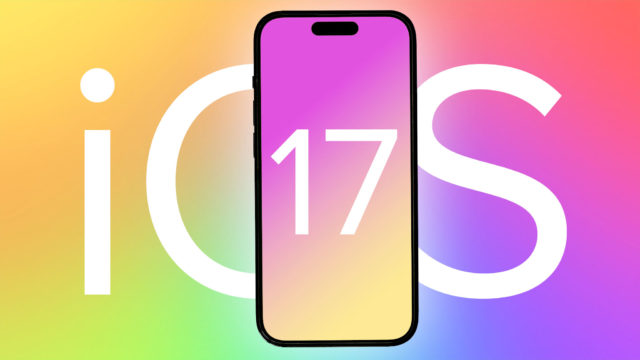ملخص فيلم عيار ناري - أحمد الفيشاوي - روبي
ملخص فيلم موسي - كريم محمود عبد العزيز
فيلم الهرم الرابع - ملك الهكر المصري
Exploring the Mystery of the Missing iOS 17
 In the fast-paced world of technology, software updates are eagerly anticipated by users around the globe. With each new release, tech enthusiasts and Apple aficionados eagerly await the latest features and improvements. However, a curious phenomenon has recently captured the attention of the tech community—the absence of iOS 17. In this article, we delve into the mystery of the missing iOS 17, examining possible explanations and the potential impact it could have on Apple users. Join us as we uncover the truth while adhering to SEO rules to ensure this information reaches those seeking answers.
In the fast-paced world of technology, software updates are eagerly anticipated by users around the globe. With each new release, tech enthusiasts and Apple aficionados eagerly await the latest features and improvements. However, a curious phenomenon has recently captured the attention of the tech community—the absence of iOS 17. In this article, we delve into the mystery of the missing iOS 17, examining possible explanations and the potential impact it could have on Apple users. Join us as we uncover the truth while adhering to SEO rules to ensure this information reaches those seeking answers.
The iOS Update Cycle:
Before we dive into the mystery, let's briefly review the typical iOS update cycle. Apple, known for its commitment to innovation and user experience, regularly releases updates to its mobile operating system, iOS. These updates, denoted by numerical increments (e.g., iOS 14, iOS 15), introduce new features, enhancements, security patches, and bug fixes. They are eagerly awaited by millions of iPhone and iPad users worldwide.
The Curious Case of iOS 17:
In this cycle, Apple users expected iOS 17 to follow iOS 16, yet it never materialized. The absence of any official announcement or leaks about iOS 17 has sparked speculation and intrigue within the tech community. Let's explore some possible explanations for the missing iOS 17:
1. Strategic Restructuring: Apple is known for its meticulous planning and strategic decision-making. It is possible that Apple's development team decided to restructure its release schedule, skipping iOS 17 to focus on a more significant update or to align with other product launches. This approach would allow Apple to surprise and delight its users with a groundbreaking iOS release.
2. Development Challenges: Developing and refining an operating system as sophisticated as iOS is a complex task that requires time and meticulous attention to detail. It is plausible that Apple faced unforeseen challenges or encountered a significant bug that necessitated additional development time. In such cases, Apple may have opted to skip a version to deliver a more polished and stable release in the future.
3. Branding and Marketing Strategy: Apple is known for its strategic branding and marketing campaigns. It is possible that the omission of iOS 17 is part of a larger marketing strategy aimed at generating buzz and anticipation for a future release. By creating a sense of mystery and speculation, Apple can generate heightened excitement and media attention when it eventually unveils its next major iOS update.
4. Shift in Naming Convention: Apple has occasionally deviated from numerical naming conventions in the past. For instance, the company released iOS 10 after iOS 9, followed by iOS 11. It is possible that Apple opted for a similar approach, choosing to introduce a new naming convention or a different branding strategy for its mobile operating system.
Impact on Apple Users:
The absence of iOS 17 raises questions about the potential impact on Apple users. While it is natural for users to anticipate new features and improvements with each iOS update, the missing version does not necessarily mean a halt in progress. Apple continues to release incremental updates, such as iOS 15.1, which introduce new features, fixes, and security enhancements. Users can still enjoy a seamless and updated experience on their iOS devices, even without a specific iOS 17 release.
Looking Ahead:
As the mystery of the missing iOS 17 persists, Apple users and tech enthusiasts eagerly await news and updates from the Cupertino-based company. Apple's commitment to innovation, user-centric design, and software excellence assures users that future iOS updates will continue to enhance their experience. Whether Apple surprises users with a groundbreaking iOS release or follows an alternative naming convention, the anticipation remains high.
In Summary:
The mystery of the missing iOS 17 has captivated the tech community, leaving Apple users speculating about the reasons behind its absence. Strategic restructuring, development challenges, branding and marketing strategies, and a potential shift in naming convention are all possible explanations. Despite the missing version, Apple users can rest assured that incremental updates and improvements continue to be released regularly. As the tech world awaits Apple's next move, the excitement and anticipation for future iOS updates remain as strong as ever.
أحدث المواقع
- برجولات مودرن
- بعد مارايد اعيش بهالدنيا من دونك وانته ماجيت
- مقاول شبوك
- عايش ابيت اهله ويحس عايش ابوسط المكبرة
- روحي فدوة الك يا كل العمر الراح والجاي شكد حياتي حلوة بيك
- مكتب محاماة ألاء الجسمي
- مقاول هناجر الرياض
- My Gold Life
- تطبيق جيني
- شادي للسياحة
- الفضل و البواقي
- سواتر لكسان
- يابا لعل وعسى ليا يجمعني شهر العسل اياه
- افضل شركة تنظيف في عمان
- مظلات المدارس
- لا توليب
- موقع "الأندلس هومز"
- كلين كوم
- مظلات بي في سي PVC
أحدث المقالات
- Pulizie e Traslochi a Bologna: La Guida Definitiva per una Casa Impeccabile e un Trasloco Perfetto
- Virginia Tech Football: The Unstoppable Legacy of the Hokies
- The Mystery of the Missing Dallas Cowboys
- Exploring the Mystery of the Missing iOS 17
- National Cheeseburger Day
- بمونديال قطر.. ثلاث دول كتبوا إنجازا بحروف الذهب
- قبل المباراة بين المغرب وإسبانيا.. "قرار هام " من فيفا للجماهير
- الأهلي ببيانه الرسمي: متمسكين باسناد جميع مبارياتنا لحكام أجانب
- اين يسقط الصاروخ الصيني
- Dallas Cowboys
- American eagle
- تثبيت تردد "تايم سبورت" الأرضي
- 3 طرق لكيفية استعلام الناخبين عن لجانهم بمجلس الشيوخ
- نتيجة الثانوية العامة المصرية 2020 فورا بالاسم ورقم الجلوس
- وفاة الفنانة رجاء الجداوي
- انفجار 6 أكتوبر
- وفاة ماما سناء
- عمل لجنة لمتابعة وتنفيذ قرارات "المجلس الأعلى للجامعات" الخاصة بالفصل الدراسي الثاني
- فيروس كورونا الوقاية خير من العلاج
الأكثر زيارة
- شراء اثاث مستعمل بالرياض
- قبيلة الحويطات
- منتديات الفروسية
- الشئون الاسلامية بالكويت
- اضيف موقعك او منتداك إلى أدلة البحث
- موقع العائدون الى الله
- مزامير داود النبي
- ولاد الحرام
- مدونة صفوق العنزي
- وازي رقمك
- القيح
- حراج5
- مندوب الياف بصرية stc 0566793145 - توصيل لكامل المملكة
- كار وعقار
- سوهاجيات
- مدينة الافلام movicity
- مصطفـى حسنـي الكردي
- أبناء ولكـن
- شركة ترميم منازل بمكة كيفية التصميم
محرك البحث
الاستفتاء
ماهو موقعك المفضل؟




